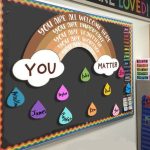Why Dolls Belong in Kindergarten
In recent years, there has been a growing debate about the role of toys in early childhood education. One important tool that often gets overlooked is dolls. Dolls have long been associated with play and imagination, but their benefits extend far beyond simple entertainment. In fact, dolls can play a crucial role in a child’s development, particularly during their early years in kindergarten.
First and foremost, dolls help children develop their social and emotional skills. Through pretend play with dolls, children learn how to interact with others, express their emotions, and develop empathy. Playing with dolls allows children to engage in role-playing scenarios, which in turn promotes social interaction and helps them understand different perspectives.
Moreover, dolls contribute to the development of language and communication skills. When playing with dolls, children engage in conversations, practice storytelling, and learn new vocabulary. They also have the opportunity to problem-solve and negotiate with their peers, enhancing their communication abilities.
Additionally, dolls help foster creativity and imagination. Children can create unique storylines, develop characters, and build their own worlds during doll play. This imaginative play not only stimulates their creativity but also boosts their cognitive development, as they plan and execute various scenarios.
Furthermore, dolls can be used as educational tools. For example, dolls representing different professions can introduce children to various careers and help them explore their interests. Doll play can also be incorporated into lessons on cultural diversity and inclusivity, as children can play with dolls from different backgrounds and learn about different cultures.
In conclusion, dolls provide numerous benefits that make them a valuable asset in the kindergarten classroom. From promoting social and emotional development to enhancing language skills and fostering creativity, dolls play a vital role in a child’s holistic development. Educators should embrace dolls as an essential tool for learning and incorporate them into the curriculum to ensure a well-rounded education for young learners.


